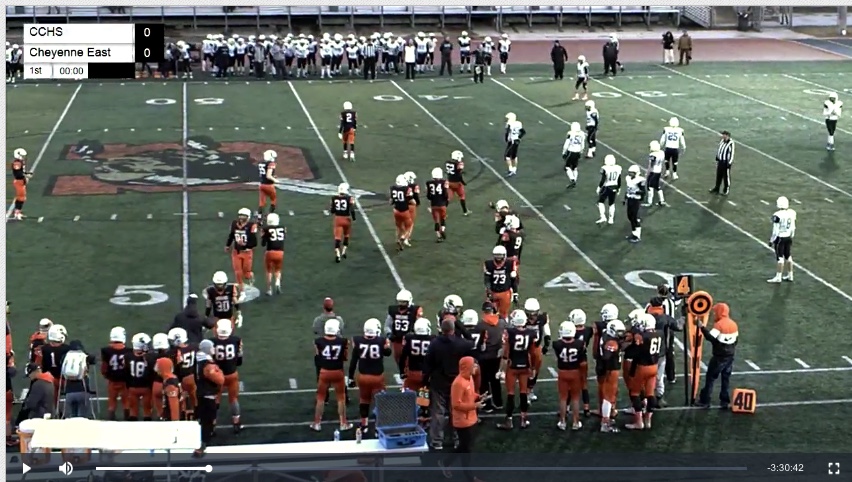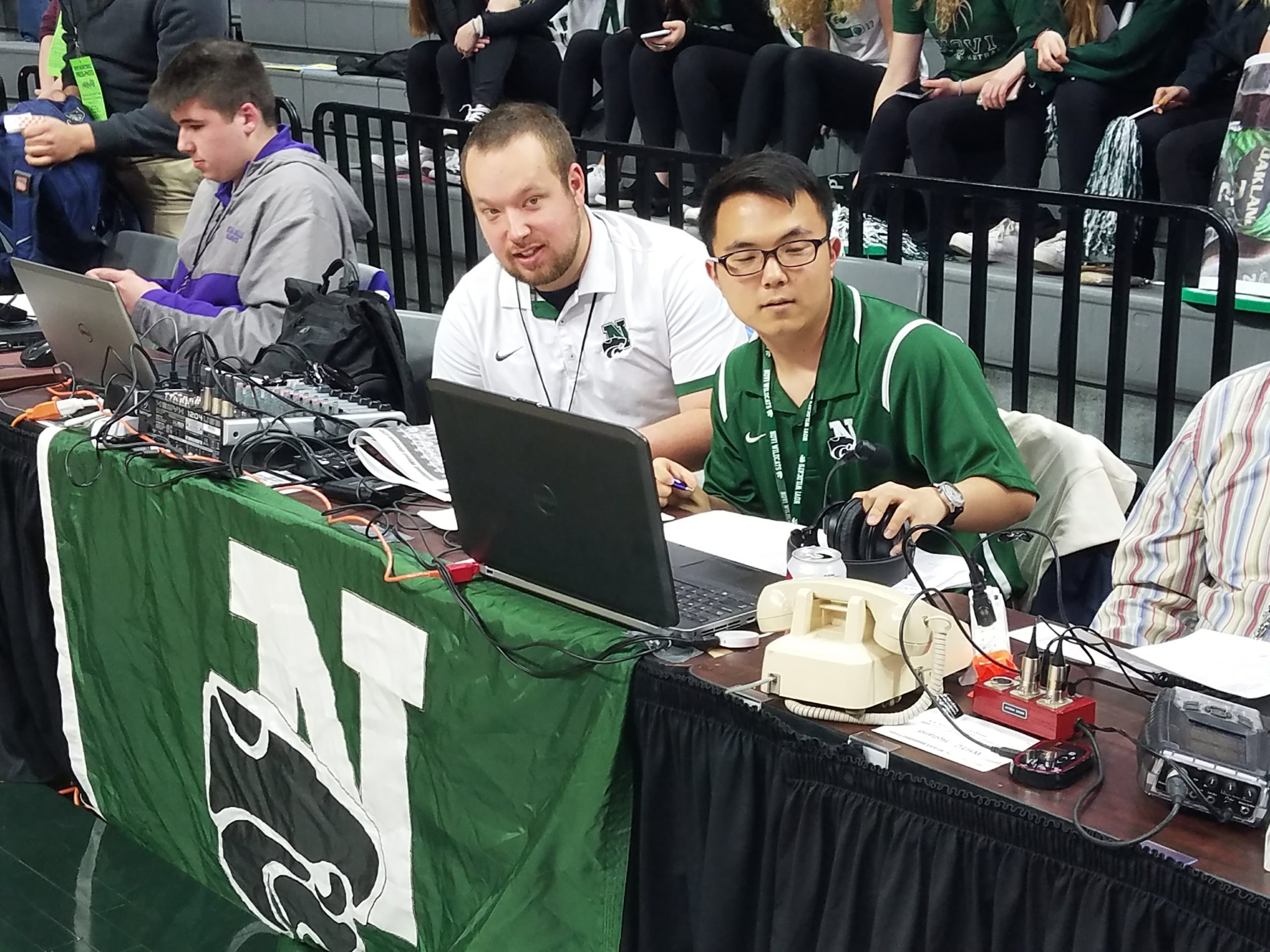An AI camera live streaming high schools sports? Even replacing an entire camera crew to broadcast a junior varsity soccer game? That’s no longer a player’s or a parent’s (or an athletic director’s) wildest fantasy.
Over the past few years, a handful of schools have enhanced their fields and gymnasiums with automated, artificially intelligent cameras. These devices allow live streaming of an unlimited number of events.
The key piece of hardware, a camera made by an Israeli company called Pixellot, learns the ways athletes move in different sports. The device, which contains up to four lenses, can follow the play seamlessly, even—when the action dictates—zooming in and zooming out.
Announcers can also add play-by-play commentary to these web broadcasts.
“We found ourselves not meeting the demand and expectations of all of our teams and parents,” says Brian Gordon, athletic director at Novi Community School District in the Detroit suburbs. “Also, moms and dads who are traveling, or grandparents who are snowbirds in Arizona and Florida, can now catch the kids’ events.”
Is AI live streaming as good as humans?
Well, that depends on a variety of factors. Even the price of the Pixellot camera unit can vary.
A district seeking to monetize the streams by selling advertising or subscriptions to the live streamed games can negotiate the hardware price with PlayOn, the streaming service operated by the National Federation of State High School Associations (NFHS). Districts would pay NFHS, and receive a portion of the revenue.
Pixellot has sold more than 1,000 camera units through PlayOn, says Doug Billman, president of Pixellot USA.
Districts streaming to their own websites don’t need to buy broadcast rights from NFHS for regular season games, but they do for playoffs and championships, Billman adds.

PlayOn will also provide programming services. An athletic director, for example, could send in all the game schedules for the facility where the camera is located. PlayOn would then program the camera to automatically record each event. On the technical side, the camera can be installed at midfield, midcourt or midrink; calibrated for its space; and connected to
the internet.
Seeing the future breakaway
Preprogrammed algorithms, based on different player formations and how athletes in different sports move, control the camera’s optical tracking system. “It knows how hockey players move and what a fast break looks like,” Billman says.
A few seconds’ delay between the action and the stream even lets the camera see into the future, so to speak, Billman says. “In that buffer, if a player does the unexpected, the camera sees it as a whole and then reprocesses,” he says. “It will see the breakaway before it has to deliver the framed image. That’s why we generally never miss anything.”
More from DA: Schools add new sports to appeal to more students
Coaches can also set the camera to record a practice. Using a tablet or laptop, the coach could stop a drill or scrimmage, and call players over to watch (and learn from) what just transpired. Coaches, parents and players can also make video clips of great plays. “What kids don’t go back and watch their games, see their goals, and share them with their grandmothers?” Billman says.
Spreading the high school sports brand
Pre-Pixellot, Novi High School’s broadcasting students filmed and provided play-by-play commentary for sporting events. However, with 80 teams ranging from football to equestrian, Gordon, the athletic director, couldn’t find enough students to cover all the games.
About two years ago, Gordon had Pixellot cameras installed in the high school’s gymnasium and outdoor stadium. The latter facility hosts football, boys and girls lacrosse, field hockey, and track meets. “Not all 80 teams play in those facilities, but the teams that do, get great exposure,” Gordon says.
The district promotes the service on its website and sends blasts over social media before each broadcast. Gordon also discusses the service with parents at meetings held before each sports season.
The number of subscriptions has continued to grow since the service launched, he says.

A broadcasting student and an adult from the school or community have been teaming up to add play-by-play coverage to some of the livestreams. The camera also links to the stadium’s large video screen so fans at the games can see replays.
“You would think there’s an entire crew of camera operators shooting the event,” Gordon says.
Next, district leaders want to install a wireless bridge so they can install cameras at the baseball and softball fields, which don’t have internet access. They’re also working with the city of Novi to put a camera in the local hockey arena.
Novi’s central location and top-notch athletic facilities allow it to host state tournaments, including state soccer finals, Gordon says. Working with the Michigan High School Athletic Association, it has been able to broadcast those games.
“We plan to continue to expand,” Gordon says. “We look at it as an opportunity to spread our brand, and it’s a great service to the community.”
Beyond varsity broadcasts
The Pierre School District in South Dakota pays a flat fee of about $3,500 per year to NFHS so all of its fans can watch the livestreams for free, Athletic Director Brian Moser says.
Off the field: Esports students develop healthier tech habits
The district has one camera in its main gym and one at its football field. Previously, it uploaded game footage—filmed by a stationary camera—to YouTube.
“If something was down, we’d have to contact the tech support people, who might be on vacation,” Moser says. “We’d get phone calls complaining about it.”
Moser sends event schedules for both facilities to PlayOn, which automatically streams and records each game through the cameras. The district streams about 400 games per year.
“Now, middle school games, and junior varsity and sophomore teams are broadcast,” Moser says. “A lot more people can watch their kids, who may not be on that varsity team. People go to our website, click and it brings up the games. It’s pretty easy.”
Pierre’s cameras also link to a local radio station so announcers there can add play-by-play commentary.
The streams have impacted stadium attendance a bit, particularly for cold-weather football games. Moser suggests that NFHS could reduce fees for parents and other fans if it raised the price for businesses to show the streams. “Those businesses are selling alcoholic beverages during high school games and making money, and taking fans away from the gate,” he says. “I’d like to see more of that money come back to the school districts.”
Public relations boost
Laramie County School District 1 in Wyoming now has seven Pixellot cameras, and currently livestreams volleyball, basketball, wrestling, football and soccer from several locations.
“If it’s affected our attendance in a negative way, it’s negligible,” says Chad Whitworth, athletic director at the district’s Central High School, located in Cheyenne. “And what you gain in public relations is worth it, for sure.”
The district’s high schools could not find enough students to produce the number of games administrators wanted to broadcast. Central High School, which has shown about 360 events with Pixellot, now also streams its graduation ceremony, which is held on the football field.
The first camera cost $3,500, and the district pays a licensing fee—that started at $2,000 per school and will max out at $3,000 after two years—so fans can watch live streams for free. Fans have to buy a subscription to see state tournament games.
Whitworth says he has received thank-you’s from students’ relatives who live all over the country. “We get plenty of crowds at our varsity contests, which are also on the radio, so the ability to see those games would have always been there. Now, a student’s aunt and uncle in Florida can see a freshman basketball game, and that’s really important.”
Matt Zalaznick is senior associate editor.Â
Interested in esports? Keep up with LRP’s Academic Esports Conference.







